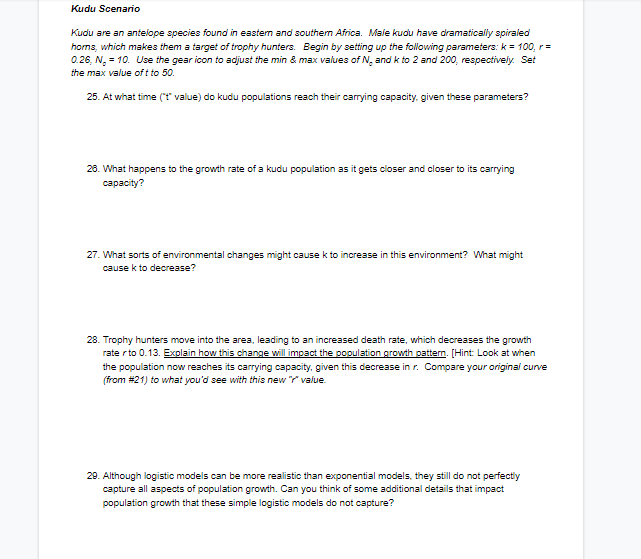Kudu Scenano Kudu are an antelope species found in eastem and southem Africa. Maie kudu have dramatically apiraled homa, which makes them a target of trophy huntera. Begin by setting up the following parametera: k= 100, r= 0.26, N, = 10. Use the gear icon to adjust the min & max values of N, and k to 2 and 200, respectively. Set the max value of t to 50. 25. At what time (T value) do kudu populations reach their carying capacity. given these parameters? 20. What happens to the growth rate of a kudu population as it gets closer and closer to its carrying capacity? 27. What sorts of environmental changes might cause k to increase in this environment? What might cause k to decrease?
Enzyme kinetics
In biochemistry, enzymes are proteins that act as biological catalysts. Catalysis is the addition of a catalyst to a chemical reaction to speed up the pace of the reaction. Catalysis can be categorized as either homogeneous or heterogeneous, depending on whether the catalysts are distributed in the same phase as that of the reactants. Enzymes are an essential part of the cell because, without them, many organic processes would slow down and thus will affect the processes that are important for cell survival and sustenance.
Regulation of Enzymes
A substance that acts as a catalyst to regulate the reaction rate in the living organism's metabolic pathways without itself getting altered is an enzyme. Most of the biological reactions and metabolic pathways in the living systems are carried out by enzymes. They are specific for their works and work in particular conditions. It maintains the best possible rate of reaction in the most stable state. The enzymes have distinct properties as they can proceed with the reaction in any direction, their particular binding sites, pH specificity, temperature specificity required in very few amounts.

Trending now
This is a popular solution!
Step by step
Solved in 2 steps


